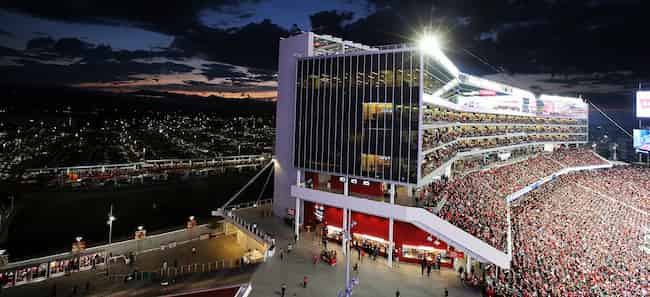What NFL Stadiums Are More Futuristic?
American football or just football is undoubtedly the most popular and beloved sport in the entire country. Pre-COVID, football stadiums could attract crowds of more than 60,000 spectators – all looking to get in on the action.
Hence, it should come as no surprise that NFL stadiums bring in vast amounts of revenue and most feature cutting-edge technology, so you can watch the best safeties in NFL with full comfort.
So, grab a beer, some peanuts, and a hot dog as we take a look at the most futuristic NFL stadiums.
- Levi’s Stadium
Home Team: San Francisco 49ers
Capacity: 68,500 visitors
From Beyonce to Super Bowl 50, Levi’s Stadium hosts numerous events throughout the year.
Besides being the home stadium of the 49ers, Levi’s Stadium is also one of the most technologically advanced sports venues globally, and this is all thanks to its strategic location in Silicon Valley.
Here are some of the most notable features that the stadium has to offer:
- Hyper-fast internet connection throughout the stadium with a speed of 40GB/s allows visitors to stream data at 50mbps.
- Strategically located Wi-Fi boosters ensure that guests are constantly connected to the network.
- Low-energy Bluetooth beacons guide visitors to strategic locations such as their seats, toilets, and concession stands.
- An in-house stadium app designed by VenueNext can be used as a season ticket, parking pass, or purchase refreshments and merchandise.
- 2000 HD television screens strategically located around the stadium and two 96,000 sq foot LED screen towers.
- 3D replay technology.
- Solar panels allow the stadium to produce its own power.
- AT&T Stadium
Home Team: The Dallas Cowboys
Capacity: 80,000 – 100,000 visitors
The home of the Dallas Cowboys, AT&T Stadium, can seat 80,000 visitors with the option to house another 20,000 with a few adjustments.
Sited at 50 feet below street level, fans are treated to a 360-degree view of the field as they enter the stadium. Besides that, augmented reality technology and 5G have been integrated to ensure that fans have the ultimate experience.
The next time you visit AT&T Stadium, look out for:
- Augmented reality columns stand at 8-feet high and let fans experience the Pose With The Pros feature. Here, visitors can take pictures or GIFs posing with their favorite players from the Dallas Cowboys.
- 5G network integration lets fans have unparalleled access to high-speed data and allows them to share their experiences with friends and family everywhere.
- The Dallas Cowboys’ app allows fans to view live stats thanks to the Starview feature and even record short videos for their favorite players.
- Hard Rock Stadium
Home Team: Miami Dolphins
Capacity: 65,326
Despite it being a 30-year old stadium, Hard Rock Stadium boasts several tech upgrades that make it worth a look. Numerous renovations during the off-seasons have helped modernize the Hard Rock Stadium for a modern audience.
Here are some notable features:
- “Living Room Boxes” that replicate the comfort of home with the excitement of watching the Dolphins play at a live game.
- Mobile payment technologies that help customers go cashless.
- Samsung smart digital displays that can function as both menu boards and signboards.
- A retractable roof that protects visitors from the weather and enhances crowd noise.
- Lambeau Field
Home Team: Green Bay Packers
Capacity: 81,441
Lambeau Field is home to the Green Bay Packers and first opened its doors in 1957. But this hasn’t stopped the Green Bay Packers from ensuring that their fans have a great time.
While it may be located in chilly Wisconsin, Lambeau Field heats things with innovative features such as:
- A fully upgraded sound and display system to keep things crisp and clear.
- Monitors are strategically located throughout the stadium to help fans keep track of the action.
- A specially designated tailgate parking area that fits up to 200 vehicles.
With the world opening up post-COVID, football stadiums are once again set to become packed with fans looking to support their favorite team. So, it will be interesting to see how stadium tech advancements change with the times.
